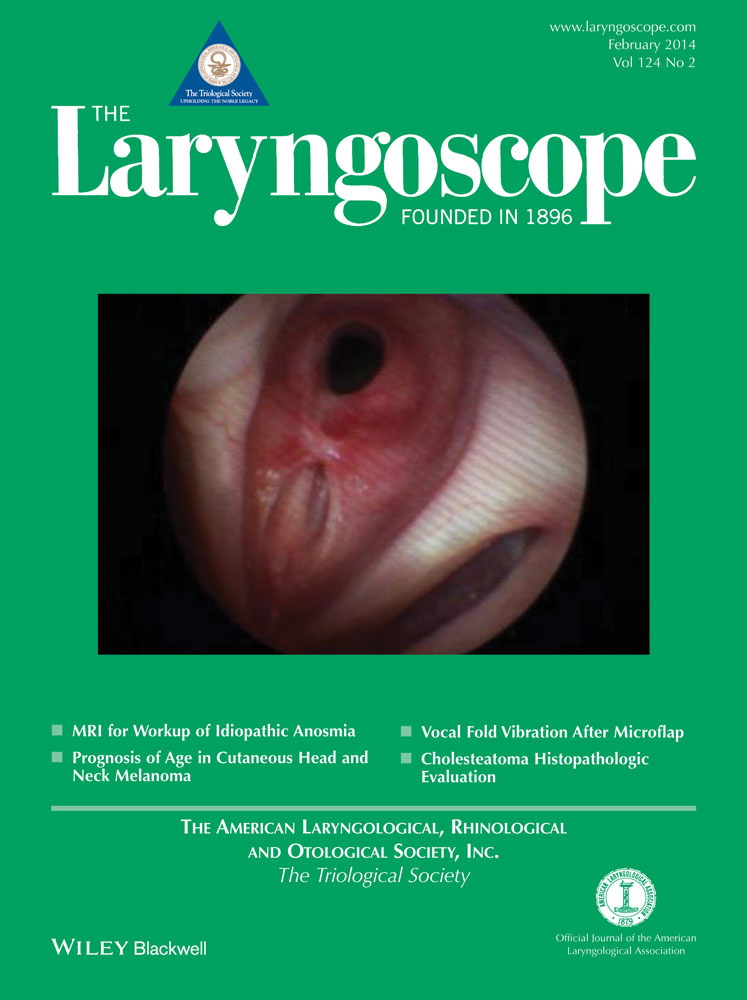We can predict postpalatoplasty velopharyngeal insufficiency in cleft palate patients
The authors have no other funding, financial relationships, or conflicts of interest to disclose.
Financial support was obtained from Quebec University Hospital Center Foundation.
Abstract
Objectives/Hypothesis
To find an anatomical measurement of the cleft palate (or a calculated parameter) that predicts the occurrence of velopharyngeal insufficiency (VPI) after palatal cleft repair.
Study Design
Retrospective cohort study.
Methods
Charts were reviewed from cleft palate patients who underwent palatoplasty by the Von Langenbeck technique for isolated cleft palate or Bardach two-flap palatoplasty for cleft lip-palate. Seven anatomical cleft parameters were prospectively measured during the palatoplasty procedure. Three blinded speech–language pathologists retrospectively scored the clinically assessed VPI at 4 years of age. The recommendation of pharyngoplasty was also used as an indicator of VPI.
Results
From 1993 to 2008, 67 patients were enrolled in the study. The best predicting parameter was the ratio a/(30 − b1), in which a is defined as the posterior gap between the soft palate and the posterior pharyngeal wall and b1 is the width of the cleft at the hard palate level. An a/(30 − b1) ratio >0.7 to 0.8 is associated with a higher risk of developing VPI (relative risk = 2.2–5.1, sensitivity = 72%–81%, P < .03).
Conclusions
The width of the cleft at the hard palate level and the posterior gap between the soft palate and the posterior pharyngeal wall were found to be the most significant parameters in predicting VPI. The best correlation was obtained with the ratio a/(30 − b1).
Level of Evidence
4 Laryngoscope, 124:561–569, 2014




